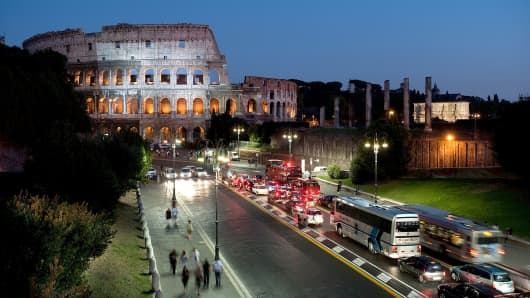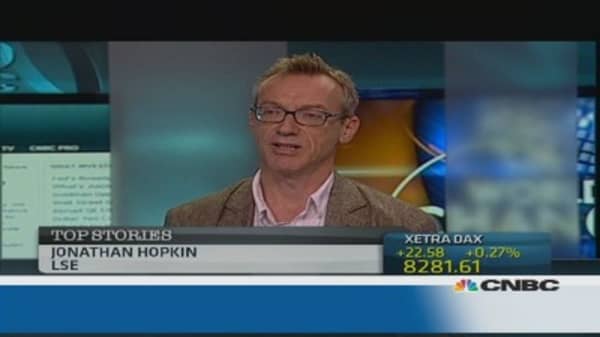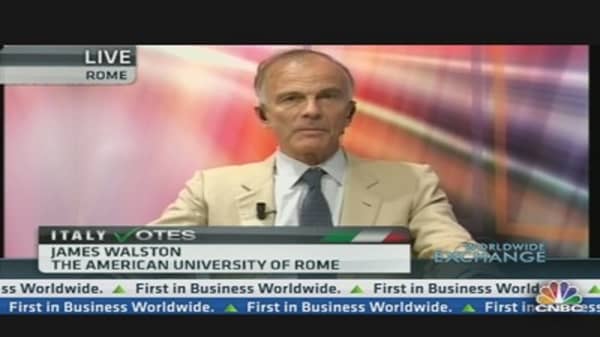Via dei Fori Imperiali, a multilane artery running through the heart of Rome, is typically a frenzy of swerving Vespas, zipping Smart cars and honking Fiat taxis.
But Mayor Ignazio Marino is seeking to transform the avenue to something calmer, where Gucci loafers and sensible sneakers would rule.
Mr. Marino's plan to ban private traffic on the roadway, which bisects a vast archaeological site, from the central Piazza Venezia to the Colosseum, has prompted grousing and histrionic debate over a project that conservators say would solidify the world's largest urban archaeological area.
(Read more: Rome votes for new mayor in key test for Italy government)
This being Rome, the first high-impact initiative of his seven-week-old administration, which goes into effect on Saturday, has provoked its share of unfavorable comparisons with the overweening ambitions of emperors past. "The mayor's job is not to pass into history, but to work for his citizens," said Luciano Canfora, a professor of classics at the University of Bari. "We already had Nero, that's more than enough."
He predicted the plan would "torture" other Romans with "catastrophic" traffic jams.
To the mayor, though, the project is the cornerstone of a bigger vision that plays on Rome's strengths and uniqueness to develop a strategy for the city based on environmental and cultural sustainability.
"I want to change what was a highly trafficked street into a walk into history," Mr. Marino, 58, said in an interview at his offices on the Capitoline Hill, which overlooks the Roman Forum. "It's part of a dream of giving back to Romans, Italians and people from around the world this incredible place where the history of the Western world developed."
(Read more: Will Rome listen to Italy's downgrade 'wake-up call')
Of course, modern Romans, and especially the neighborhood's residents, have more practical concerns. Most have to do with the anticipated spillover effect of closing a broad avenue used by as many as 1,600 motorists an hour during peak times of day, according to city statistics.
Residents' associations and local shopkeepers fret about aggravating the traffic congestion that is already as quintessentially Roman as the city's famed cupolas, making their lives even more "invivibile," a common Italian expression used by those complaining about life in the capital.





